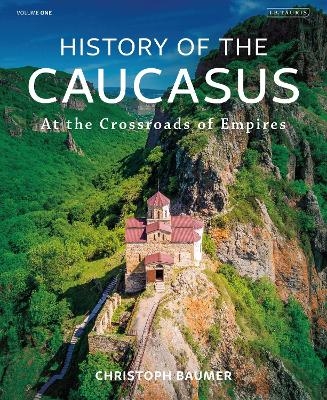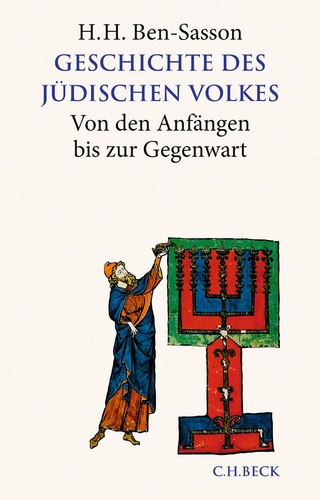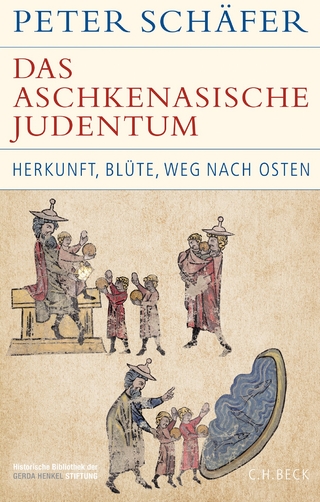
History of the Caucasus
I.B. Tauris (Verlag)
978-1-78831-007-9 (ISBN)
"Rich and illuminating." Literary Review
"Phenomenally accurate." History Today
"Stunning." The Morning Star
"Sweeping." The New European
"A wonderful book." Current World Archaeology
"In a class of its own." The Caspian Post
A landscape of high mountains and narrow valleys stretching from the Black to the Caspian Seas, the Caucasus region has been home to human populations for nearly 2 million years. In this richly illustrated 2-volume series, historian and explorer Christoph Baumer tells the story of the region’s history through to the present day. It is a story of encounters between many different peoples, from Scythians, Turkic and Mongol peoples of the East to Greeks and Romans from the West, from Indo-European tribes from the West as well as the East, and to Arabs and Iranians from the South. It is a story of rival claims by Empires and nations and of how the region has become home to more than 50 languages that can be heard within its borders to this very day.
This first volume charts the period from the emergence of the earliest human populations in the region – the first known human populations outside Africa - to the Seljuk conquests of 1050CE. Along the way the book charts the development of Neolithic, Iron and Bronze Age cultures, the first recognizable Caucasian state and the arrival of a succession of the great transnational Empires, from the Greeks, the Romans and the Armenian to competing Christian and Muslim conquerors. The History of the Caucasus: Volume 1 also includes more than 200 full colour images and maps bringing the changing cultures of these lands vividly to life.
Christoph Baumer – a leading explorer and historian of Central Asia, Tibet and the Caucasus – has written many well-received books in the fields of history, religion, archaeology and travel. These include, among others, The Church of the East: An Illustrated History of Assyrian Christianity (2006), Traces in the Desert: Journeys of Discovery across Central Asia (2008), China’s Holy Mountain: An Illustrated Journey into the Heart of Buddhism (2011) and the seminal History of Central Asia in four volumes (2012-2018) all published by I.B.Tauris. Dr Baumer is President of the Society for the Exploration of EurAsia, Senior Research Fellow at the Kazakhstan Academy of Sciences, and a member of the Explorers’ Club, New York, the Royal Asiatic Society, the Royal Geographical Society and the Royal Society for Asian Affairs, London. He is a recipient of the prestigious Sir Percy Sykes Medal, awarded to him by the Royal Society for Asian Affairs in 2015.
I At the edge of Europe and Asia - An Introduction
1. A Time of Conflict
2. A Special Geography
3. Peoples and Languages
4. Objectives and Sources
II The Formation of the Landscape and Early Humans of the Palaeolithic
1. The Origin of the Caucasus Mountains and the History of the Adjacent Seas - Black Sea and Caspian Sea
Excursus: Did the Flood take place near the Black Sea?
2. Homo Georgicus: First Early Humans Outside Africa
3. Neanderthals and Homo Sapiens in the North and South Caucasus
III Prehistoric Cultures: From the Neolithic to the Iron Age
1. The Southern Caucasus
1.1 The Shulaveri-Shomu-Aratashen culture
1.2 The Chalcolithic cultures of Sioni and Leila Tepe
1.3 The Late Chalcolithic and Early Bronze Age Kura-Araxes Culture
1.4 The Kurgan Cultures of the Middle Bronze Age
Excursus: The invention of wheel and cart
1.5 Late Bronze Age and Iron Age
1.6 Early Tribal Organizations, War Alliances and Confederations
1.7 The Colchis in Prehistoric Times
2. The Northern Caucasus
2.1 Chalcolithic Settlements and Early, Flat Tumuli
2.2 The Early Bronze Age Cultures of Maikop
2.3 The Middle and Late Bronze Age Dolmen Culture
2.4 The Late Bronze Age and Early Iron Age Pri-Elbrus Culture
IV. A First Caucasian state, Greek Empires and Northern Equestrian Peoples
1. Urartu/Biainili: The First Caucasian State
1.1 The Creation of Biainili
1.2 Biainili Struggles with Assyria for Supremacy in the Middle East
1.3 Rise of Assyria and Weakening of Biainili
1.4 Biainili's Decline
2. Equestrian Peoples from the North and Greek Trading Colonies
2.1 The Cimmerians
2.2 Immigrant Scythians and Autochthonous Maiotes
2.3 Greek Emporia in the North-western Caucasus
2.4 Sarmatians, Alans and the Hun Invasion
V. The South Caucasus under Achaemenid Sovereignty, Armenian Kingdoms and Pontos
1 The Achaemenid Sovereignty
2 The Hellenization of the Colchis
3. Early Kingdoms of Armenia
3.1 Armenian Dynasties of the Orontides/Yervanduni and Early Artaxiad
3.2 Tigranes the Great, Pontos and the Mithridaic Wars
Excursus: The eight deities of the Armenian pantheon
3.3 Late Artaxiad: Armenia between Rome and Parthia
3.4 Roman Patronage of Pontos
VI Roman-Parthian Condominiums in the South Caucasus
1. Comments on Early Historiography in the Southern Caucasus
2. The Kingdom of Kartli (Iberia) and Lazica
2.1 Legendary Ancestors and the Parnavazids
2.2 Iberia in the Orbit of Rome
3. Caucasian Albania in pre-Islamic Time
4. Armenia
4.1 Armenia as a Roman-Parthian Condominium
4.2 Armenia between Sasanid and Roman Sovereignty
VII The Introduction of Christianity as a State Ideology and the Political Division of the South Caucasus
1. Legends of Apostolic Missionary Work
2. Armenia and the Tradition of Gregori the Enlightener
2.1 Syrian-Mesopotamian and Greek-Cappadocian Impulses
2.2 King Trdat IV and Gregori the Illuminator
2.3 Characteristics of Early Armenian Christianity
2.4 A power struggle between King and Catholics and the division of Armenia
Excursus: Mesrop Mashtots and the invention of the Armenian script
3. Kartli: From King Mirian III to the Abolition of the Monarchy
3.1 The Legend of St. Nino and the Christianization of Kartli
3.2 Kartli Under Persian Sovereignty
4 The Conversion of Albania and the Apostolic Church of Caucasian Albania
5 Lazica and a First Christianization of the North Caucasian Alans
5.1 The Lazican Wars
5.2 The Christianization of Lazica, Alania and Svanetia and the veneration of military saints
6. The Persian Hegemony in Armenia, Georgia and Albani
7. The Alienation Between the Caucasian Church Hierarchies
VIII Between Caliphate, Byzantium and Khazars
1. Southern Caucasian Principalities under Islamic Rule until the Battle of Bagravand in 772
2. The Rise of the Bagratid dynasties
2.1 The Emergence of the Armenian Kingdom
Excursus: Paulikians and Tondrakians
2.2 The Formation of the Georgian Kingdom of Sakartvelo
3. The Empire of the Khazars in the Northern Caucasus
4. The Kingdom of Alanya in the North-western Caucasus
5. Muslim Dynasties of Albania and the Invasion of the Seljuks
5.1 The Sayids
5.2 The Sallarids
5.3 The Rawwadids
5.4 The Shaddadids
5.5 The Yazidids and Hashimids
6. The Kingdoms of Armenia, Byzantium and the Seljuk Conquest
6.1 The Armenian Kingdoms
6.2 The Byzantine Annexation of Armenia
6.3 The Seljuks Conquer Armenia
6.4 Ani under the Rule of the Shaddadids
IX. Outlook
Appendices
I. Population statistics by country
II Ancient established languages of the Caucasus by language families
III Chronology of the most important Caucasian dynasties
Notes
Bibliography
List of Maps
Photo credits
Acknowledgements
Index
Concepts
People
Places
| Erscheinungsdatum | 17.08.2020 |
|---|---|
| Zusatzinfo | 225 colour illus |
| Sprache | englisch |
| Maße | 237 x 289 mm |
| Gewicht | 2398 g |
| Themenwelt | Geisteswissenschaften ► Geschichte ► Regional- / Ländergeschichte |
| Geschichte ► Teilgebiete der Geschichte ► Religionsgeschichte | |
| Sozialwissenschaften ► Ethnologie | |
| Sozialwissenschaften ► Soziologie ► Spezielle Soziologien | |
| ISBN-10 | 1-78831-007-1 / 1788310071 |
| ISBN-13 | 978-1-78831-007-9 / 9781788310079 |
| Zustand | Neuware |
| Informationen gemäß Produktsicherheitsverordnung (GPSR) | |
| Haben Sie eine Frage zum Produkt? |
aus dem Bereich


